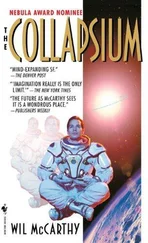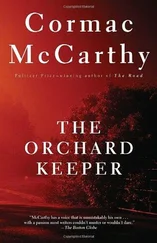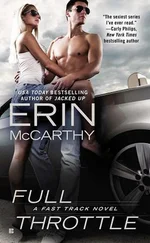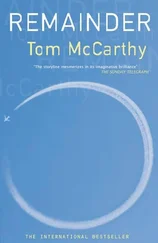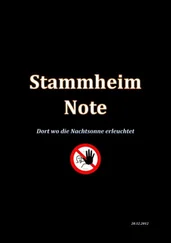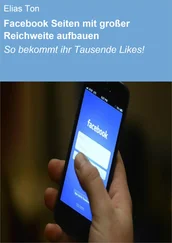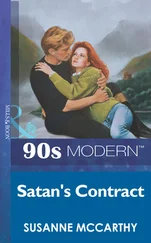14.5Skirting the edge of Battery Park, I managed to pick out a couple of small signs for the ferry terminal: cheaply printed ones, clamped onto lamp-posts, jostling for space with better, more official signs pointing to Battery Park, to Bowling Green, or to a second Memorial, this one for veterans of Vietnam. I had to weave and thread my way through queues, lines, gaggles, general throngs of people speaking Spanish, Japanese, French, German, Mandarin and who knows what else, before, behind a broken veil of pretzel stands and gyros trucks, the terminal loomed into view. The building itself looked new: all glass and metal, not unlike the Company’s headquarters, with giant, steel-cast, three-dimensional letters mounted above the entrance, boldly announcing STATEN ISLAND FERRY . As I followed the path round towards the building, more food stands and lamp-posts, passing through my field of vision, temporarily erased some of these letters, so the sign read SATE I LAND, then, a few seconds later, STATE IS ERR. This intrigued me; I started moving back and forth erratically to tease new couplings out by eliding some letters, restoring others. I got SAT AND FRY, SANS LAND, TEN SANDER, TEN IS LAND … The letters were like Scrabble pieces rearranging themselves in an attempt to form a legitimate word; or like the numbers on a combination lock, revolving singularly and in series through their permutations, each click bringing with it the chance that the correct sequence, the true number, will eventually reveal itself, crack open whatever safe it’s protecting, spill its contents. FER. AIL. END. S A I L — then, to my great excitement, on the fourth or fifth pass down the same ten-yard stretch, S AT I N. An irrational elation overtook me as this last word spelled itself out. It was short-lived, though: soon the word morphed into STA I N; then the roof’s overhang eclipsed all but the first two letters: ST. Coincidentally, at the same moment I became aware of a man’s voice off to my left pronouncing, over and over, a word that sounded like a contraction of Starbucks: Stix or Stycks . He said it in an interrogatory manner. Turning round to where the voice was coming from, I saw that its owner was an old-style confectionary vendor selling candy-floss out of a street-cart. He was asking two kids whose dad was buying them some whether they wanted it in a bag or on (and this, of course, was the word I was mishearing) sticks. The kids chose sticks. After he’d handed them the billowing, synthetic stuff, they stood munching it silently, staring back at me with hostile, sticky faces.
14.6The terminal’s interior, despite its new façade, was dingy. Parts of it were boarded up, awaiting repair. The smell of popcorn, hot dogs, pizza and donuts hung about the concourse, impregnating air that was much warmer than the air outside — cloying and heavy, too. People were milling about, waiting for the ferry: normal, everyday folk who commuted on it daily. A few of them wore suits — cheap, polyester ones, the standard-issue outfit of the low-white-collar ranks; but most wore plain, casual clothes. They looked bored, frumpy, tired, unhealthy, overweight and generally just very, very normal . An MTA man armed with a megaphone was telling them that the 3:30 boat would be arriving momentarily . He actually meant “in a moment”; but the term’s correct sense, for a moment, given these ferries’ quick and constant turnaround, was carried over in his misuse of it. The man’s megaphone, and his impatient and authoritarian tone, gave the scene the air of an evacuation: looking at the drab, deflated passengers, I pictured refugees being herded off towards some makeshift temporary shelter. One of them was hobbling on crutches; another had a cane; a third one a badly fitting wig. The walls of the terminal were largely bare. On one side of the sliding doors towards which these walls funneled the passengers, there was a poster advertising low-cost medical insurance; on the other side, one selling debt-relief packages. To this poster’s left, large windows framed gantries that, since no ferry was docked, were raised. A seagull idled at the end of one. Beneath it, buffers, formed of wooden stakes packed together in tight rows, were turning gangrenous and rotting where they sank into the water. Beyond them, out in the harbour, tankers passed by. I could see one being loaded up over in Red Hook, by giant cranes that looked like insects reared up in the throes of some dying agony. Scanning my gaze across the harbour, to the right, I could see Governors Island, the Statue of Liberty, the outline of New Jersey, with more cranes; then, furthest away of all, no more than a grey lump on the horizon, the place where we were headed.
14.7The crowd was growing, pressing in now. A lady with a hamburger in her hands bumped me as she went by. The man with the megaphone made his momentarily announcement again. On the wall I saw a little screen I hadn’t noticed before. It was showing Staten Island attractions: a compilation of vague and generic scenes — people playing golf, or sharing a slap-up meal, or walking through some kind of pleasant-looking shrubbery; a carousel; a football field with children running on it; a man paddling a canoe past reeds and bulrushes. These followed one another in no particular order, then gave over to a picture of an orange ferry cruising through calm waters. Shot (presumably) from a helicopter that circled the moving boat so as to film it from both prow and stern ends and from port and starboard sides as it advanced smoothly and happily across a sea that seemed to welcome it and even help propel it onwards, the scene was idyllic: this bright-orange vessel, cruising through the afternoon, cruising (so it seemed) right out of time, past all statutes and limits, to some other place where everything, even our crimes, has been composted down, mulched over, transformed into moss, pasture and wetland for the duck and coot to build their nests in. Maybe I could somehow nest there too, I told myself; float, calmly, to some spot, some tract from which other terrains might open, realms where everything was different. I turned my head from the screen and looked at the real harbour, the real water. These, with low sunlight bouncing off them, also looked unreal, idyllic. I could make out an actual ferry moving over them towards me: being orange, just like in the film, it seemed to emerge from the bright and hazy light itself, as though the latter’s molecules were rearranging themselves, just like the letters, in an attempt to generate and shape it. Other people had spotted the boat as well: a stir of excitement rippled through the crowd, manifest in hundreds of leg-stances changing, shoulders tightening and lifting, backpacks being slung over backs, general precipitation towards the still-closed sliding doors. Running my gaze once more along the contours of the terminal, I realized that the building was itself shaped like a ferry, its walls angling inwards like a bow as they progressed from north to south, away from the great landmass of Manhattan to the water, the two sides eventually meeting at the sliding doors’ flat prow. It struck me that it would have been designed like that, deliberately: a kind of mirror-double of the boats that came to dock at it. As this boat, my boat, loomed nearer, I experienced a vertiginous excitement at the prospect of this happening: a space meeting its inverse, negative and positive coming together, merging into one; and at the prospect of finding myself standing at the very point where this great fusion was occurring. It was more than just a prospect: as the ferry hove still closer, a transformation that was physical seemed to take place; it felt as though not just the ferry but the terminal as well were moving, carrying me with it, bearing me onto the verge of something rich, strange and miraculous.
Читать дальше

